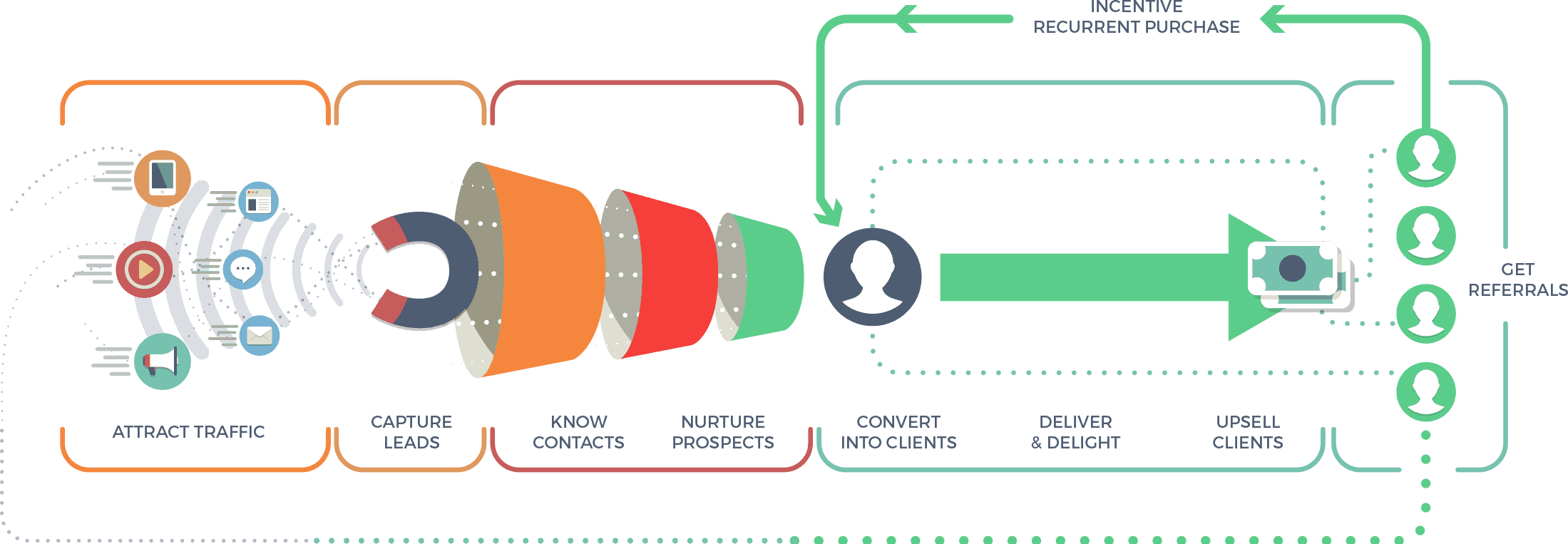
Pat Racco
Founder of Advantage Media
Growth Hacking explained, straight and simple.
Startups and companies now realise the importance of sustainable and long-lasting growth.
This aspect becomes even more critical if the company in question is a startup.
The only guarantee of success is to have a good product, a good strategy and a capable executive team.
However, how is it possible to give more boost and acceleration?
What is growth hacking?
Probably the words “growth hacking” don’t give as much credit to this new marketing concept as it deserves.
Growth hacking is a process to acquire and engage users by combining traditional and digital marketing tools with web analytics and development tools.
Growth hacking is a mix of creative marketing, experimentation, data analysis, web development and automation. However, let’s don’t immediately think about eCommerce or SaaS software.
The best way to understand growth hacking is to learn about the role of a growth hacker. The only goal of the growth hacker is to increase the number of prospects, leads or users of a product or service. In other words, growth.
To do so, however, a growth hacker is not limited to traditional marketing tools but uses innovative methods to reach the target, developing new frameworks, and best practices focused on virality and word of mouth, using existing tools and technologies (email, social networks, text messages, etc.).
Virality is not randomness but planning.
– Ryan Holiday –
The growth hacker can be considered the natural prosecutor of the marketing specialist and needs to know the different areas of marketing (digital) flawlessly and must continuously be able to go beyond what he has studied, learned or used to doing every day. Marketers already use most of the growth hacking strategies used by these figures, but the growth hacker thanks to its mindset can innovate and create new processes that bring impressive results regarding ROI and, above all, traction.
A growth hacker is better defined as a marketing scientist than just a marketer; a professional that sits in between a developer and a marketer.

Traction
Traction is the ability of a company to take hold on the market and gain visibility. Having good traction for a company means preventing or minimising the risk of betting and investing everything on traditional but above all less performing channels. Traction is vital for startups.
A strong analytical and scientific base characterises growth hacking.
We move on to the process of creation and initiation which consists in carrying out many small changes to campaigns and communication tools, iteratively testing them. These small changes could lead to improvements (or worsening) of user involvement and retention, as well as an increase in quality traffic.
In this way, it’s possible to decide which solution is best suited to the product offered and to correct the mistakes made without having to face high costs. The goals of growth hacking may be different, but the meaning is that the more we focus on a specific goal and aspect of growth, the more we nail it.
It all starts with the product
For the growth hacking process to be successful, it is necessary that the offered product is valid from all points of view to avoid “blows” of negative word of mouth. More important, there is an audience ready to buy it (for this a user research phase is often fundamental to sustainable growth).
The first step is to test your strategy of generating traffic on a small scale and then enlarge it if you get the results you wanted. Every product and service needs a tailor-made strategy, so it is not possible to follow the path made by others. Only thanks to the continuous experimentation of new methods it is possible to improve the growth rate, profits and competitiveness of the company.
What does a growth hacker do?
A growth hacker traces all the data concerning the product/service and the campaigns performed, performs multivariate tests, takes care of creating content and web design, finds new ways to promote the product and above all to optimize the conversion rate, reporting and motivating weaknesses or bottlenecks to the management team.
If necessary the growth hacker can activate Pay Per Click campaigns but, in case of a tight budget, find alternative solutions to bring quality traffic to the website or landing page.

The growth hacking strategy
Growth hacking is a science and is made up of well-defined steps. In this way, it is possible to calibrate the results obtained and the problems encountered at each stage of the process and make the necessary changes promptly (a bit like what happens in Lean Marketing).
If you want to learn the essence of growth hacking, look at this eBook (coming soon)!
There are 6 necessary steps in a growth hacking process:
1. Identify objectives that can be pursued
Focusing on circumscribed objectives make it easier to measure the results accurately. If the objective is too broad, the data collected is insignificant and can’t provide a complete picture of the situation. The goal of growth hackers will therefore not be to increase the number of active users per day right away; instead, it is to increase the production of content that encourages an increase in the return rate on the site, thus increasing the number of active daily users organically.
2. Implement analysis tools
Without a correct measurement, the pre-established objectives lose their meaning as it’s not sure that they have been achieved. By adopting adequate analysis systems, it is possible to collect data that can also provide indications on other aspects of the strategy adopted or on any objectives to be pursued in the future.
3. Leverage your strengths
In this way, it could be possible to obtain impressive results making minimal efforts. If, for example, a startup has an extensive database of contacts and manages to create newsletters in a short time, it is better to focus on this type of communication. Otherwise, if starting from “zero contacts”, email marketing could not be the optimal strategy and it might be more convenient to focus on other methods.
4. Experience
The first step is to make a hypothesis about the result of the experiment. A hypothesis can be confirmed or rejected. In both cases, the next step is to analyse the data to understand any deviations or change if needed. The experimentation process requires time and internal coordination, the difficulties are multiple, the first data collected could be discouraging, but the final results offer relevant ideas for a correct growth hacking strategy.
5. Optimisation through experiments
There are two ways to do this. The first is to separate a sample of users on which the experiment is performed. By comparing them with those of the traditional procedures, it is possible to see the real effects of the experimented campaign.
The second method is to perform A/B tests that allow to identify the optimal solution. In both cases, it is imperative not to abandon the experiment until there are results that clearly show that those that were considered strengths are not.
6. Iterate the correct process
Repeat the process with a new experiment or optimise the one already tested. The number of experiments that we can put into practice dictates the sustainability of growth.
The funnel in growth hacking
Once a product is created, the primary goal is to bring traffic that is interested in its features and functionality. Since these flows vary continually depending on the product and the relevant public, it is useful to create a funnel through which to monitor and analyse the relationships between the company and the target.
The benefits of creating a funnel in growth hacking are many, here are the main ones:
- Identification of bottlenecks in the flow of users thanks to the use of analysis tools suitable for each phase of the funnel.
- Identification of new growth hacking techniques to be used to manage bottlenecks and general traffic.
- Improvement of the retention rate at each stage.
- Higher flexibility thanks to the possibility of adopting a lean approach that allows the company to proceed in small steps and make the necessary changes.

The main goal of the funnel in the initial phase is to get visitors. There are three strategies to do this: pull, push and product.
At this stage, we are talking about visitors as they have not yet established any relationship with either the company or the product offered. The complete funnel can be divided into 3 phases:
- Acquisition
- Activation
- Retention
Each phase of this process is essential for growth and requires different skills.
Acquisition
The goal of this phase is to attract visitors and to do these different methods that belong to two macro categories are used: Push and Pull.
Among the push activities, we find paid advertising and collaborations with other companies (non-competitors). In this case, the visitor is almost forced to land on our website coming out of the context in which was previously located. A classic example of this type of strategy is promotional videos on YouTube where the user can not access the video if not after having seen the advertisement.
The push strategy ensures optimal results if supported by an accurate analysis of the data regarding the characteristics of the various communication channels, the customer lifetime value (CLV) and the user conversion costs (Cost Per Lead). In the absence of these data, a push strategy can cause much higher costs than returns.
The pull activities, on the other hand, consist of the publication of infographics, blog posts, podcasts, eBooks, webinars, presentation and any other type of content that can place the company as an authority on a specific topic. It’s what we can safely call inbound marketing.
To these activities, investments in SEO or social media campaigns must be taken into account, as well as the creation of contests, conferences and so on. Pull strategies are sometimes preferable to push strategies because they are less intrusive and less expensive, if not free. However, a growth hacker hardly chooses to use only one strategy. It’s more likely to opt for a mix of the two.
While marketers are already using these two strategies, growth hackers have another option available: the product-oriented strategy. These people can cooperate with the development team to ensure that the product is promoted by itself. This can be achieved by collecting information about the consumer through the use of the product. By integrating APIs, a tremendous amount of information flows through the product (as in the case of fitness apps that allow sharing the results on social networks) and goes back to the company, ready to be analysed.
Alternatively, by inserting a backlink in the product (as Hotmail or WordPress did). You can read how Hotmail reached millions of users with this strategy in this ebook (coming soon).
This type of methods can work wonderfully and can also be the starting point of the following activation and maintenance strategies within the funnel.
Activation
Once the flow of visitors is created on the website, it is essential to encourage them to take actions that encourage involvement and improve the user’s interest in the product. The actions the growth hacker wants the users to take is different from time to time, according to the product/service offered and the company strategy.
Usually, they want to:
- Get the visitor’s email address
- Push the visitor to create an account
- Push to read content
- Promote sharing
- Push to purchase
- Fill in forms and questionnaires
- Create involvement by watching videos or photo galleries
- Promote user interaction
- Push the visitor to invite friends.
Various methods can be used to achieve this goal. Some are the optimisation of landing pages that are specifically designed to push the user to take one and one only action, the use of clear and direct call to actions, the use of email drip campaigns, facilitated by tools such as MailChimp and ActiveCampaign (there are many many more).
These tools allow you to send follow-up messages after the completion of an action (through marketing automation) or on a time basis. You may not know it, but it is also possible to create different sequences, based on the user behaviour: If a user clicks button A, then send email X; if the user does not click anything, send email Y.
Another one of the most exciting and probably most effective techniques is gamification. The involvement is obtained through a system of rewards for each action performed along the path designed for the user. In this way, it is possible to satisfy the visitor’s need to obtain immediate results or in real time.
My absolute favourite is a website that changes dynamically, based on what the user has already seen. To give an example, let’s say I see a banner that invites me to download an ebook, when I come back the next time, there shouldn’t be a different message, rather than the same ebook I have already downloaded? I think there should be.
Retention
The primary responsibility for improving the retention rate is undoubtedly the quality of the product/service. But it is possible to influence the retention rate with ad-hoc tools such as marketing automation, email drip campaign, notifications sent in relation to specific events, transactional emails with discounts and loyalty bonuses, the personalisation of content and, more generally, all the tools that allow the company to stay in touch with its customers.
Very useful could be to activate a feedback system that allows customers to communicate their concerns about the product and the company to understand how to act to improve.
The advantage of growth hacking is that of greater flexibility compared to traditional marketing campaigns, so it is possible to adapt the product to the needs of the customers. Being able to maintain the relationship with the customer for a long time makes the possibility that becomes a promoter of the company a real thing; thus favouring the acquisition of new customers.
The growth hacking funnel should not be seen as a static series of steps to follow. On the contrary, it could be useful to test it on a group of users, observe the results and decide whether to replicate it on another group or make improvements. As already said, this approach (similar to that of lean marketing) is one of the strengths of the growth hacking strategy as it allows to make improvements promptly.
Advice for a successful growth hacking strategy
Nowadays, finding your way on the web is difficult. For this reason, implementing growth hacking strategies becomes fundamental, especially for startups.
Here are six tips to follow to get the best results:
- Investing in marketing automation. Automating processes can improve efficiency and ROI. The most popular softwares used are Hubspot, Oracle (Eloqua) and Marketo, but it is possible to find cheaper or open source software that can be adapted to business needs thanks to the tech knowledge the growth hacker has. I also really like AgileCRM.
- Be mobile-friendly. Investing in mobile marketing helps the company’s SEO and is of fundamental importance since few can boast of seriously strong skills in this matter.
- Choose the communication channels on which to focus. Through the process of experimentation and measurement of results, it is possible to identify the most suitable channels to reach the audience efficiently. Going on too expensive channels would put you at the risk of nullifying all the efforts made.
- Do not limit yourself to traditional marketing. Growth hacking is more than just marketing because it combines these skills with R&D, ICT and engineering.
- Do not measure too much. Calculating the ROI of each action performed could become an obsession. However, sometimes the elements are hard to measure, and stubbornness in this sense leads to wasted energy and resources that would have been more useful if used elsewhere.
- Find the right softwares for analysis. Treating scientifically collected data is a crucial step in the growth hacking strategy. To do this, you can use one of the available softwares or create one that meets the needs of the company.
A unique opportunity
To obtain optimal results, the methods and strategies analysed in this post must adapt to the business, needs and problems encountered. In growth hacking, it is fundamental to have analytical and creative abilities accompanied by a vision that is projected to the future.
Growth hacking is not easier than traditional marketing. However, it guarantees efficiency and improvement of the results obtained regarding growth and therefore returns, especially for tight budgets like for startups.
Do you want to increase sales or contacts of your company or startup? Do you want to discover all the benefits and advantages of a growth hacking strategy for your company? Give me a buzz 🤙
